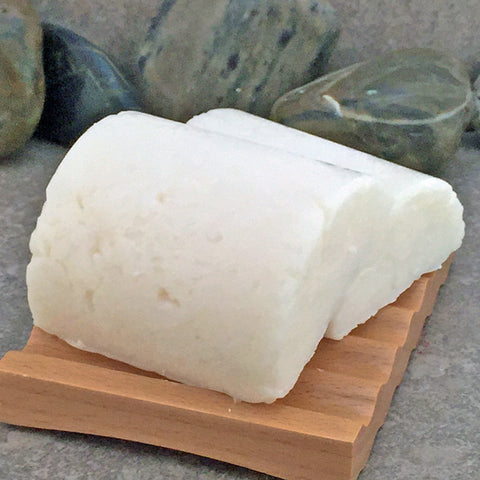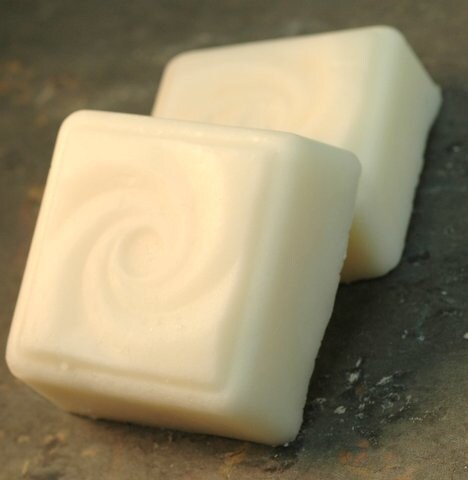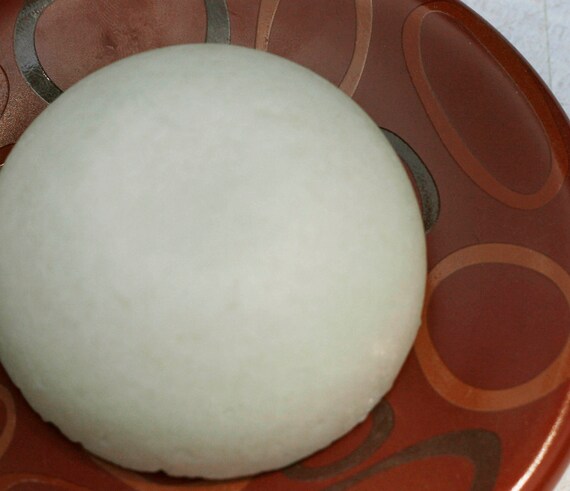I just made my first test batch of a shampoo bar using synthetic detergents (syndets). DH and I have washed our hair once each with this bar, but so far so good.
My recipe is based on info from Cathy at The Dish (see http://www.soapdisharchives.com/forum/index.php?showtopic=22602&st=25#) as well as advice from Susan (swift crafty monkey) about her syndet shampoo bars (see http://swiftcraftymonkey.blogspot.com/2010/06/shampoo-shampoo-bars-overview.html and http://swiftcraftymonkey.blogspot.com/2010/06/shampoo-conditioning-shampoo-bars-for_03.html ) Between those two ladies, I think I'm in reasonably good hands as far as the formulation goes.
I'm still at a loss, however, about how to form the syndet mixture into an attractive bar. Most of the bars I see for sale on etsy and other websites are rather rustic looking and I now know why.
There are two ways these bars are made -- one is like a bath bomb where the solid powders/flakes are mixed with a bit of liquid and pressed into a mold. The "bath bomb" type of bar has a sandy look:
Ponte Vedra Soap Shoppe:

Ponte Vedra recipe and method: http://pvsoap.com/solid-shampoo-bar-made-with-sls-needles/
Lush:

The other method is to melt the syndets and other ingredients to form a homogenous paste that is then pressed into a mold. This paste is really really sticky and has to be glopped, not poured into a container, much like a soft shave soap. Most bars made this way look like this:
Alaiyna B Bath and Body:

But the shampoo bars by Scenter Square on Etsy look smooth and refined, like this, and I really like the look:

Does anyone have some tips on how I might get this smooth, polished appearance?
My recipe is based on info from Cathy at The Dish (see http://www.soapdisharchives.com/forum/index.php?showtopic=22602&st=25#) as well as advice from Susan (swift crafty monkey) about her syndet shampoo bars (see http://swiftcraftymonkey.blogspot.com/2010/06/shampoo-shampoo-bars-overview.html and http://swiftcraftymonkey.blogspot.com/2010/06/shampoo-conditioning-shampoo-bars-for_03.html ) Between those two ladies, I think I'm in reasonably good hands as far as the formulation goes.
I'm still at a loss, however, about how to form the syndet mixture into an attractive bar. Most of the bars I see for sale on etsy and other websites are rather rustic looking and I now know why.
There are two ways these bars are made -- one is like a bath bomb where the solid powders/flakes are mixed with a bit of liquid and pressed into a mold. The "bath bomb" type of bar has a sandy look:
Ponte Vedra Soap Shoppe:

Ponte Vedra recipe and method: http://pvsoap.com/solid-shampoo-bar-made-with-sls-needles/
Lush:

The other method is to melt the syndets and other ingredients to form a homogenous paste that is then pressed into a mold. This paste is really really sticky and has to be glopped, not poured into a container, much like a soft shave soap. Most bars made this way look like this:
Alaiyna B Bath and Body:

But the shampoo bars by Scenter Square on Etsy look smooth and refined, like this, and I really like the look:

Does anyone have some tips on how I might get this smooth, polished appearance?























































